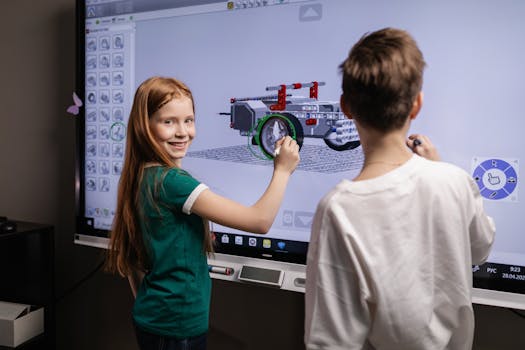
Exploring the Future: Interactive Science and Technology Displays
Takeaways: Interactive science and technology displays are transforming the way we engage with educational content, making learning more immersive and enjoyable. These displays foster curiosity, enhance visitor engagement, and provide hands-on experiences that are crucial for understanding complex scientific concepts. As technology continues to evolve, the future of these displays promises even more innovative and impactful experiences.
In today’s fast-paced world, the way we learn and interact with information is undergoing a significant transformation. Interactive science and technology displays are at the forefront of this change, offering dynamic and engaging ways to explore complex concepts in an accessible manner. These displays not only captivate audiences but also enhance educational experiences across various settings, including museums, science centers, and educational institutions.
The Importance of Interactive Displays in Education

These displays cater to diverse learning styles, making education more inclusive. For visual learners, interactive graphics and animations can simplify complex processes. Auditory learners benefit from narrated explanations, while kinesthetic learners thrive through hands-on activities. This multifaceted approach not only facilitates deeper understanding but also fosters a love for learning.
Diverse Types of Interactive Science and Technology Displays

- Touchscreens and Digital Stations: These allow visitors to navigate through information interactively, often incorporating videos, quizzes, and simulations that enhance the learning experience.
- Augmented Reality (AR) and Virtual Reality (VR): AR and VR technologies immerse users in a virtual environment where they can engage with 3D models of complex scientific phenomena or historical events.
- Hands-On Experiments: Many exhibits encourage visitors to conduct simple experiments, fostering a sense of discovery and understanding through direct experience.
- Interactive Games: Educational games that challenge users to solve problems or answer questions can make learning fun and competitive, motivating participants to engage more deeply with the content.
- Mobile Apps: Many institutions have developed apps that complement physical exhibits, allowing users to enhance their experience through additional information and interactive features.
Each type of display offers unique advantages, and together they create a rich tapestry of learning opportunities that cater to various interests and age groups.
The Future of Interactive Displays

Moreover, the integration of Internet of Things (IoT) technology will enable displays to collect real-time data on visitor engagement and learning outcomes. This information can be invaluable for educators and exhibit designers, allowing them to continually refine and improve the learning experience.
Furthermore, as more institutions recognize the importance of STEM (science, technology, engineering, and mathematics) education, interactive displays are likely to become a standard feature in schools and public spaces. This shift will not only enhance the learning experience but also inspire the next generation of scientists, engineers, and innovators.
Conclusion







